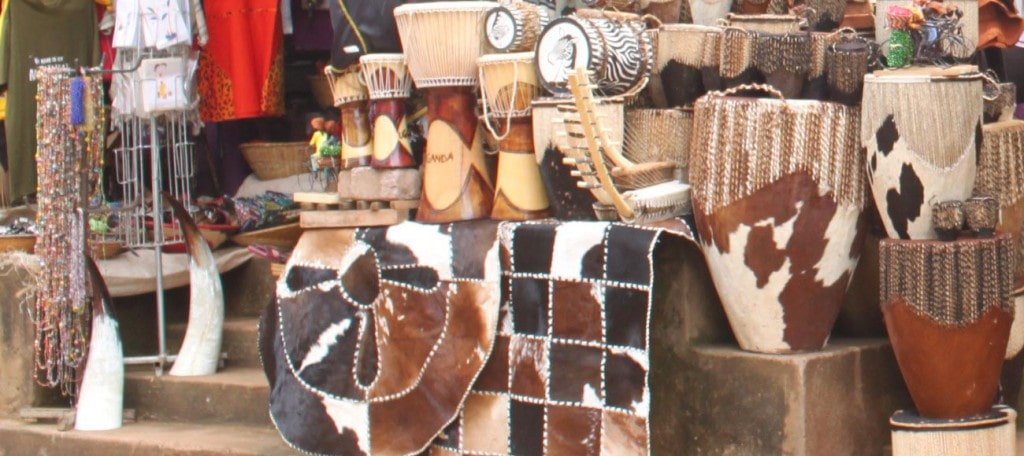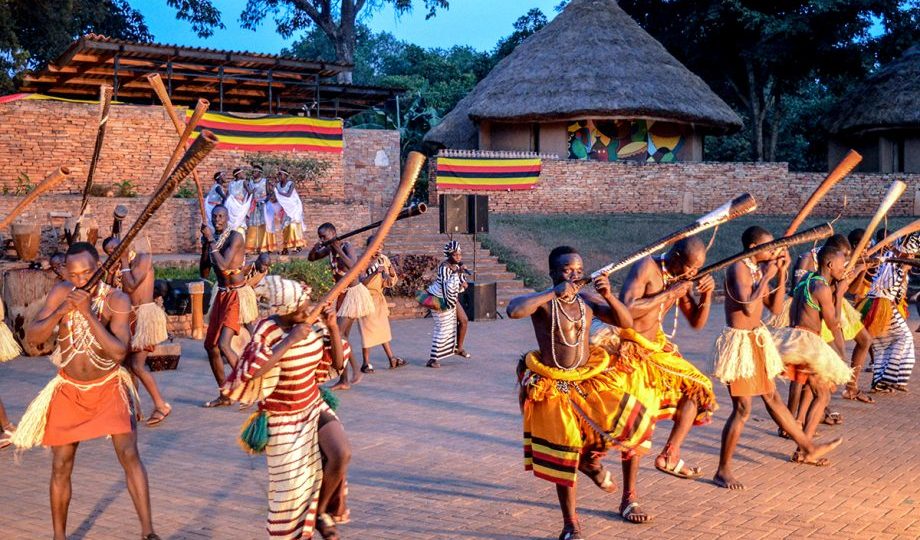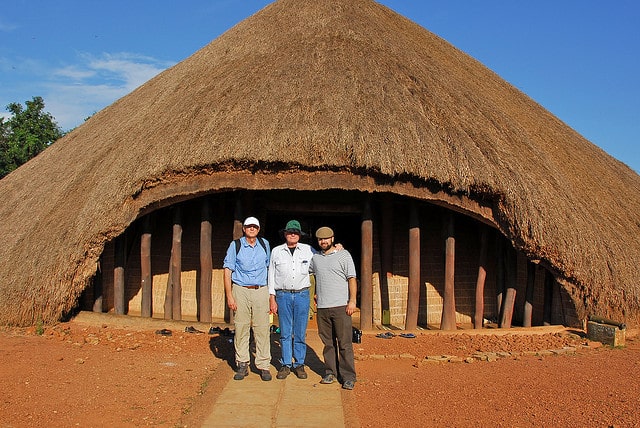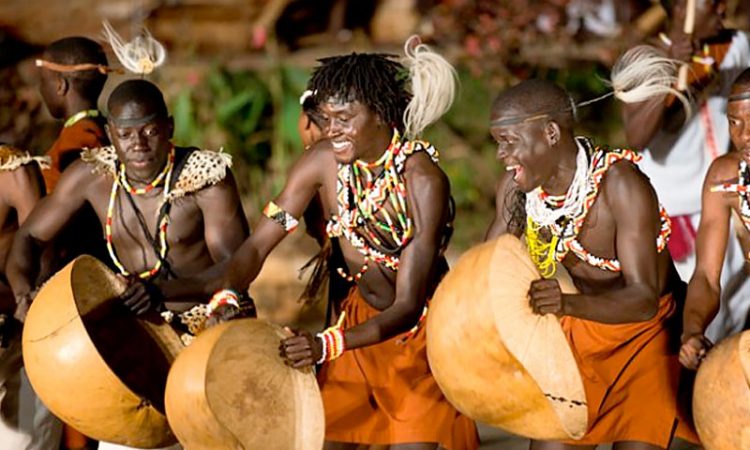Uganda People And Culture :
Uganda as a country is rich in culture with a very strong heritage, the strong culture and traditions of Uganda have been maintained by different kingdoms and chiefdoms which have helped on reducing at the rate which degeneration manners in Ugandans happen.
Different kingdoms found in Uganda include Toro Kingdom, Buganda Kingdom, Bunyoro Kingdom, Busonga Kingdom. Other tribes in Uganda have chiefdoms which are headed by chefs.
Each kingdom and chiefdom in Uganda have different norms and traditions they follow ranging from the way the conduct themselves in public, the way they marry to the way they dance. The Banyakole have Kitagururo, the Baganda have Baksimba, the West Nile people have the Agwal dance, the Acholi have Otole, and Bwora dance, the Bagisu have Imbalu dance which they perform during the circumcisions celebration and the Banyoro and Batoro have Runyege dance. These dance styles showcase the richness in every tribe and culture in Uganda.
Ugandans
The cultures of Ugandans can be seen through different cultural sites and a wide range of art crafts sold in different parts of the country, some of the beautiful art craft include wood cravings, beads, papyrus mats and reeds, knives, stools, knives and clothes among others. In Uganda, there are also different sentiments that are attached to different items that are found in different kingdoms. These include
Spears and Shields
Spears and shields hold a strong importance to Uganda’s culture, the spear is used as symbol of hunting and the shield is a sign of protection. These spear and a shield are mostly held by the Kabaka of Buganda Kingdom and other kings as a sign of superiority over other people. In the ancient times, hunting was considered as the main job of most people in the kingdoms and the king was the chief hunter.
 Uganda People And Culture
Uganda People And CultureSpears, shields and a black cloth are also used as a way of announcing an heir or heiress to someone after his or her passing, when an heir is announced, he is given a spear and a black cloth is tied around them to show everyone that he is the new head of the family. This is mostly done in Buganda Kingdom during the Kwabya Olumbe ceremony.
The Drum
The drum is a common instrument used allover Uganda and is used for different purposes, drums are made wood and skin mostly from cows, goats and other animals.
In Buganda kingdom, the drum is used during the inauguration of the King and anniversaries of the Kabaka (King), it is also used for purposes of announcing trivial matters to the public and is done when announcing drums to get the attention of people, then start announcing the message they want to be passed on.
Drums are also used during traditional worship, circumcision ceremonies of the Mbale males, last funeral rites and during church services and masses.
The drums are used as a form of entertainment and they are used in different techniques by different tribes, these techniques match with the different dance moves of the different cultures.
The Buganda people and Culture
To Buganda people, Luganda is the used language and their cultural system is centralized with the Kabaka being the overall head. Buganda people are divided into different clans and each clan follow a unique totem, the lineage in Buganda is passed on from father to son and they all have to be of the same totem.
All clans in Buganda have a structure a hierarchical in nature with the clan leader locally known as Owakasolya at the top, the Subdivisions follow and these are locally known as Ssinga, Mutuba, Lunyiriri and lastly the family comes in and this is known as Enju. It is a must for each and every muganda to know all these and all that entails in their clan was away of easily tracing their lineage, Uganda People And Culture
The clans have a long history and when one is introducing themselves to others most especially during traditional ceremonies, they say his name, followed by is father’s name and the paternal grand father’s name and the great grand father’s name.
Clans are not known by the name of the people that founded them, they are known by the different totems that have were introduced locally as Omuziro and the secondary Totem known as Akabbiro. The only people who do not have totems are the princess and prince.
In Buganda, when greeting especially the Kabakas, the ladies are supposed to kneel down and the gents are supposed to lay down a sign of respect to the Kabaka (King).
Cultural wear for Baganda is the Gomesis for the ladies and the Kanzus and the gentlemen and they are a must wear for the traditional ceremonies.
The Banyoro / Toro People and Culture
The Banyoro and Toro people live in the western part of Uganda in the districts of Kibale, Hoima and Masindi. These people belong the Bantu people and they under the leadership of a king referred to as Omukama.
The Mukamas of Bunyoro and Toro kingdoms are one of the kings who were re-installed when kinoms were brought back to Uganda after years of being banished. The Banyoro and Toro people have pet names for their children after birth and they include Abwooli, Atwooki, Adyeri, Amooti, Atenyi, Akiiki, Araali, Apuuli and Bala among others.
The naming of the children in Banyoro and Batoro depends on the sex of the children, for baby boys they wait for 3 months to name him and for girls it takes 4 months to be named. These names are normally given to the children by the parents, Grand Parents or any relative. These names are normally given out to children according to the state in which parents are in or the circumstances surrounding their birth.
In Bunyoro, the marriage has always been arranged by the families. Though these days, children can get married to aby person they wish to as long as they are accepted by the family, Uganda People And Culture.
Greeting in Bunyoro is done using their pet names but the greetings differ according to the superiority of an individual being greeted, for instance when greeting the King, one has to go to the place where the King is seated and greet them from them. The process of greeting the King is known as Okurata in Runyoro.
The Ankole People And Their Culture
The Ankole people are a cattle keeping tribe as they own the largest cattle in Uganda known as the Ankole Cattle. Ankole people speak Runyankole and they live in districts of Ibanda, Mbarara, Ishaka and Bushenyi.
 Ankole Cattle
Ankole CattleThe Ankole people incorporate cattle products in their daily life such as milk and ghee which are signature products for the western part of Uganda. Cultural wear for the Ankole people are Mishanana and Bussuti, these traditional wears are normally worn for traditional ceremonies. Ladies put on Bussuti and men put on Kanzus and they add a cow hide on top of it. Among the important items in the Ankole culture are the drums used during traditional ceremonies.
The Ankole people are organized into different clans, the kingdom of Ankole is still under investigation as many people have come up t claim that they are the true kings of the Ankole.
The Ankole people rarely kneel down when greeting and they normally give hugs when greeting, Ishabwe the most famous local dish in the Ankole people.
The Basoga people and Culture
The Basoga people are found in the South Eastern region of Uganda, though Busoga is a kingdom it is filled with chiefdoms that are headed by different chiefs but all them are under one king known as Kyabazinga.
The Basoga people who are part of the Bantu group are believed to have come from Congo, the Basoga people are grouped into different clans and lumonde are their staple food. Basoga people are very similar to the Baganda people culture wise and this is why many people call them Baganda.
The Batwa People and Their Culture
The Batwa people also known as Twa are the original inhabitants of the forests of Bwindi and they are said to have been living in the forest for more than 300 years, the Batwa are pygmies depending on the forest, they practice hunting and farming.
In ancient times, they used to poach forest animals for food including mountain gorillas until the forests were gazetted as national park. Up to date, the Batwa still use rudimentary tools for daily activities such as farming, and cooking, Uganda People And Culture.





